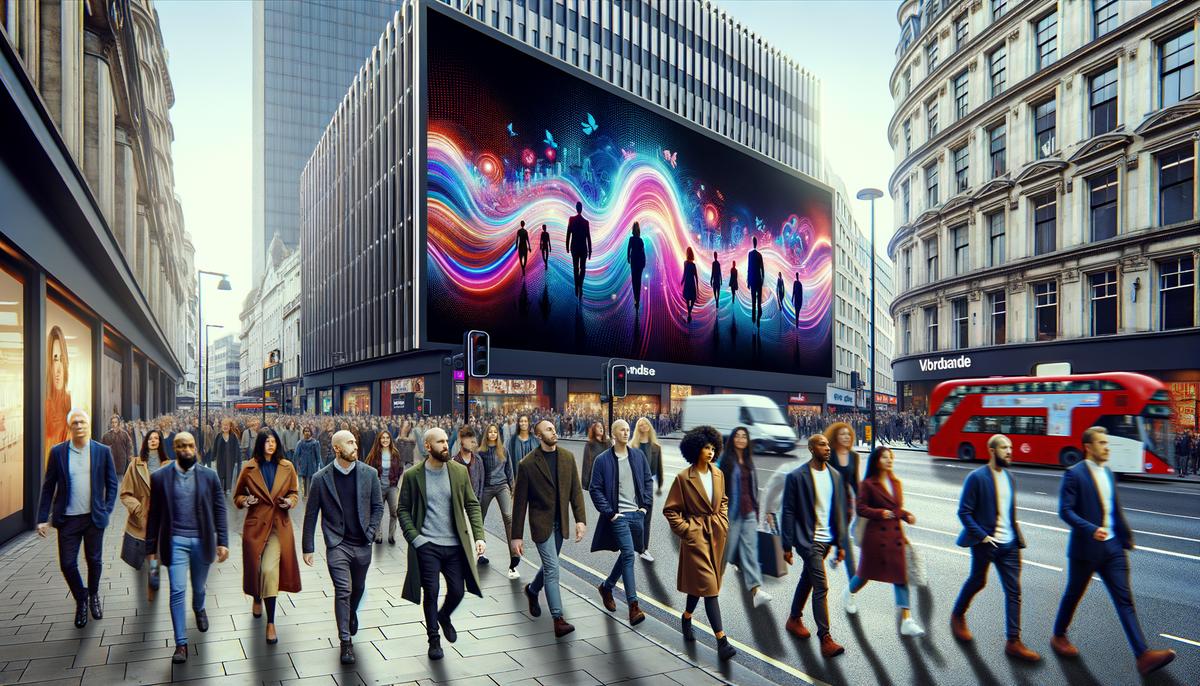The landscape of advertising is witnessing a significant shift with the integration of digital technology, particularly in the out-of-home (OOH) sector. This transition to digital out-of-home (DOOH) advertising is not just about replacing static billboards with digital screens; it's about redefining how messages reach the public space. As we examine the fundamentals, targeting capabilities, creative opportunities, and measurement challenges of DOOH, we gain insight into how this medium is transforming outdoor advertising into a more dynamic, interactive, and measurable form of communication.
DOOH Fundamentals
Digital Out-of-Home (DOOH) advertising represents a leap forward from traditional Out-of-Home (OOH) advertising by introducing digital technology. DOOH brings dynamic content to the forefront, allowing ads to change based on time of day, audience, or other triggering events, providing a more targeted approach than static messages on a billboard.
DOOH incorporates interactivity and real-time content updates. While OOH might showcase a single, unchanging image or message, DOOH platforms can run multiple advertisements in a sequential loop, responsive advertisements that change based on current events or weather, and even interactive ads that engage passersby. This flexibility allows advertisers to tailor their messages more precisely to specific audiences and times, maximizing their impact.
DOOH also offers the ability to collect data and measure ad performance in ways that were not possible with traditional OOH. Through sensors and connectivity, DOOH signs can gather insights on viewer engagement, demographics, and the number of people who view the ad at a given time. This data-driven approach enables advertisers to refine their campaigns for better results and prove their return on investment.
The scalability and ease of content management in DOOH campaigns are notable. Advertisers can deploy or change their digital campaigns across multiple locations from a central control system, eliminating the need for physical replacements or manual uploads. This introduces flexibility that enables brands to push timely messages or respond to context changes swiftly, especially useful in rapidly changing scenarios like advertising upcoming events, flash sales, or public service announcements.
DOOH opens up possibilities for creative storytelling. By employing moving images, video content, and sounds, DOOH captures audience attention in busy public places more effectively than static posters or signage. The use of high-quality digital screens ensures that visual content pops, drawing eyes and engaging viewers even in the bustling urban environment.
By transitioning from the physical to the digital realm, DOOH advertising has pushed the boundaries of what's possible with outdoor campaigns. While traditional OOH laid the groundwork for reaching audiences outside their homes, DOOH has taken this concept into the modern age—empowering brands with precision targeting, instant adaptability, captivating visuals, and interactive potential. These changes have made outdoor advertising more effective and engaging, transforming public spaces into vibrant canvases for creative expression and digital innovation.
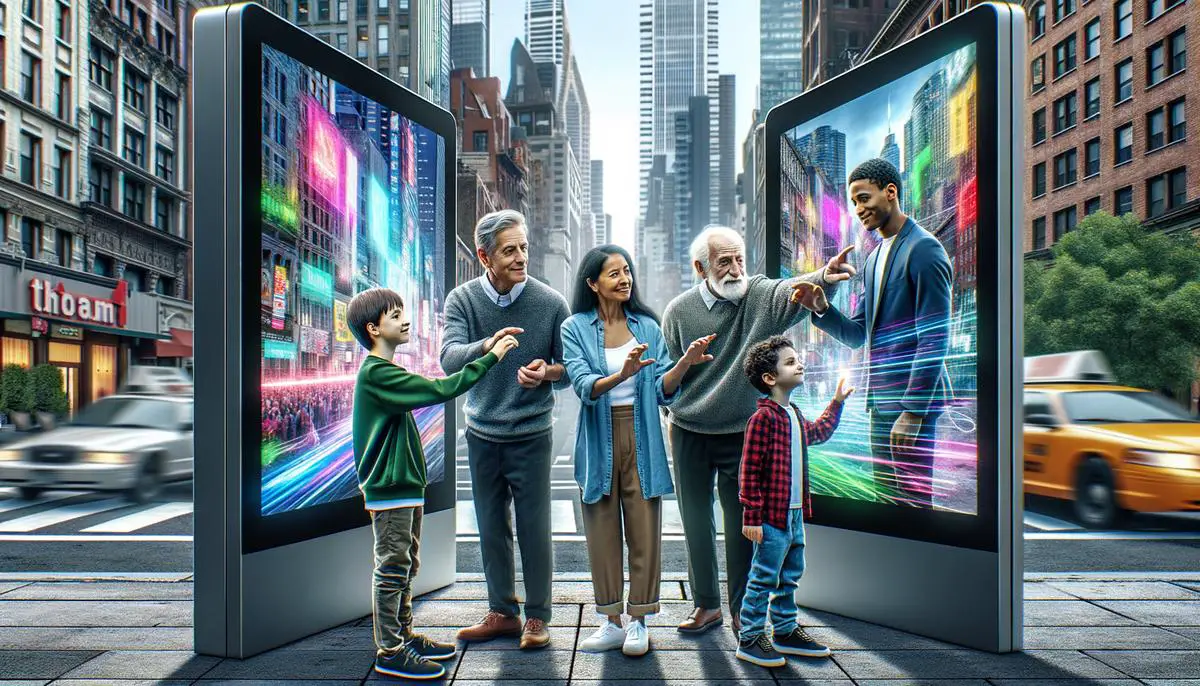
DOOH Targeting Capabilities
Targeted Advertising Opportunities in DOOH
Digital Out-of-Home (DOOH) advertising, with its advanced capabilities and robust technology, introduces precision-targeted advertising opportunities. Leveraging digital innovation, DOOH connects with audiences through three pivotal targeting strategies: dayparting, geotargeting, and point-of-interest (POI) targeting.
Dayparting: Marrying Time with Targeting
Dayparting showcases different advertisements based on varying time slots throughout a day, allowing messages to be shown at their most opportune moments. For example, advertising morning-centric products, like a hearty breakfast sandwich, at a digital signage near a city metro station as commuters start their day. As evening approaches, this message could dynamically shift to that of a relaxing dinner offer at the same outlet. Dayparting empowers advertisers to align their messaging with the audience's lifestyle pattern, enhancing ad relevance and effectiveness.
Geotargeting: Localized Precision
Geotargeting in DOOH leverages geographical data to tailor advertising content to local audiences, adding relevance to ad campaigns. This technique is effective where localized messaging or promotions can make a direct impact. By adjusting content based on geographic locales, brands can communicate in a language that resonates, reflect local cultural nuances, or highlight area-specific offers. A digital billboard could welcome travelers with bespoke messages near airports or exhibit local delicacies to encourage exploration in a new city.
POI Targeting: Focusing the Lens
Point-of-Interest targeting focuses on strategic locations for deploying bespoke advertisements. This targets critical hubs or venues, tapping into an audience already engaged or interested in complementary or competing offerings. For instance, activating sports drink ads around marathon events or unveiling luxury retail promotions in affluent shopping districts—POI targeting magnifies ad visibility where it counts most, ensuring brands hit the bullseye in audience engagement.
These targeted advertising techniques position DOOH as a medium of high-impact visual translations and a smart envoy carrying pinpoint messages across cityscapes and transit lines. Through intelligent scheduling with dayparting, resonating local accents via geotargeting, and targeting audience interest through POI targeting, DOOH transforms outdoor advertising into a science of strategic communication.
In leveraging these targeting capabilities, DOOH transcends traditional barriers of reach and message uniformity. It embraces the diversity of audience daily patterns, geographical uniqueness, and locale-specific interests, fostering a more intimate dialogue between brands and their varied audiences. This intelligent fusion of data-driven accuracy and creative expression enables advertisers to craft campaigns that are impactful, meaningful, and timely—evoking the potential of digital in the arena of out-of-home advertising.
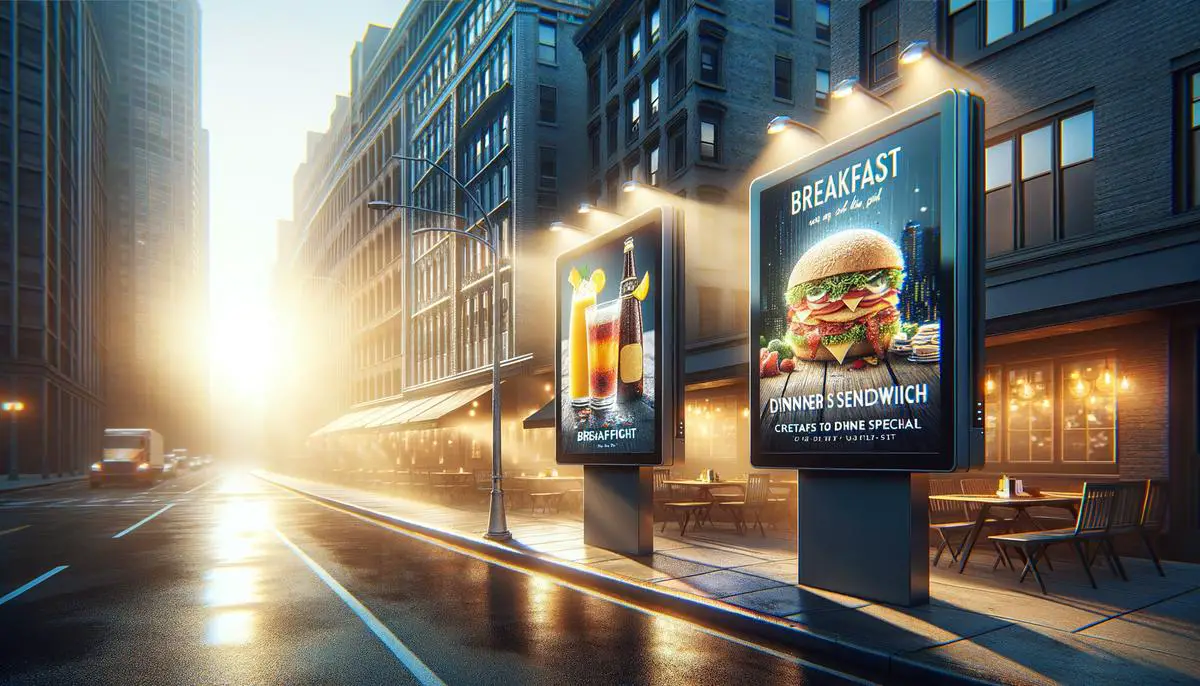
Creative Opportunities in DOOH
Creative Opportunities Unleashed with DOOH
The advent of Digital Out-of-Home (DOOH) advertising expands targeting capabilities and unleashes creative opportunities for advertisers. DOOH advertising blends the immersiveness of digital media with the ubiquity of outdoor placements, offering a fertile ground for creative innovation. The ability to weave dynamic content changes based on time of day, weather, audience movement, and other real-time data ushers in a new era of engaging and interactive advertising that captures audience attention.
Dynamic Engagement with Real-Time Triggers
One compelling creative facet of DOOH is its capacity for dynamic content adaptation. Imagine an outdoor digital screen that changes its displayed advertisement depending on the weather. On a hot day, a DOOH billboard could showcase a refreshing iced drink; whereas, during a downpour, the same screen might pivot to promoting cozy indoor cafes. This makes the advertisement more relevant to the present moment and increases its memorability among the audience.
DOOH's capability to update in real-time makes it an ideal platform for running countdowns to special events, flash sales, or product releases, creating a sense of urgency and excitement. The countdown mechanism can intertwine with social media feeds or live event streams, knitting together digital engagements with physical advertisements, and creating a holistic marketing experience.
Interactivity: Beyond Passive Viewing
Beyond passive viewing, DOOH invites audiences to become part of the advertisement itself. Interactive DOOH setups — equipped with touchscreens, motion sensors, or augmented reality (AR) technologies — encourage direct interaction, transforming public adverts into personal experiences. From posing next to a life-sized digital character to participating in an AR game directly from the screen, these interactive campaigns make the audience an active participant in brand storytelling. This interactivity enhances audience engagement and elevates brand recall and affinity.
Success Stories: Innovation in Action
Examples of creative DOOH campaigns are plentiful. For instance, a renowned automotive brand leveraged DOOH screens equipped with vehicle recognition technology. These screens would identify the brand's cars as they passed by and present personalized messages to drivers, such as congratulating them on their vehicle choice. The campaign merged personal recognition with a public spectacle, crafting a uniquely personalized outdoor advertising experience.
In another inventive use of DOOH, a popular streaming service deployed weather-reactive billboards that showcased various shows or movies perfect for the day's weather conditions. Sunny days highlighted adventurous outdoor-themed content while rainy days suggested cozy movies perfect for staying in. These campaigns don't just advertise; they offer service to the public mood, underlining the potency of DOOH's dynamic content capabilities.
The Creative Horizon
DOOH hands marketers a palette brimming with creative potentials, urging them to paint outside the traditional lines of advertising. With the foundation laid by targeting precision, DOOH's real valor springs from its versatility in crafting emotive, interactive, and personalized narratives that resonate with the passerby. As technology continues to evolve and integrate further into our urban fabric, the creative opportunities within DOOH are set to soar, pushing brands to redefine the limits of outdoor advertising engagement.
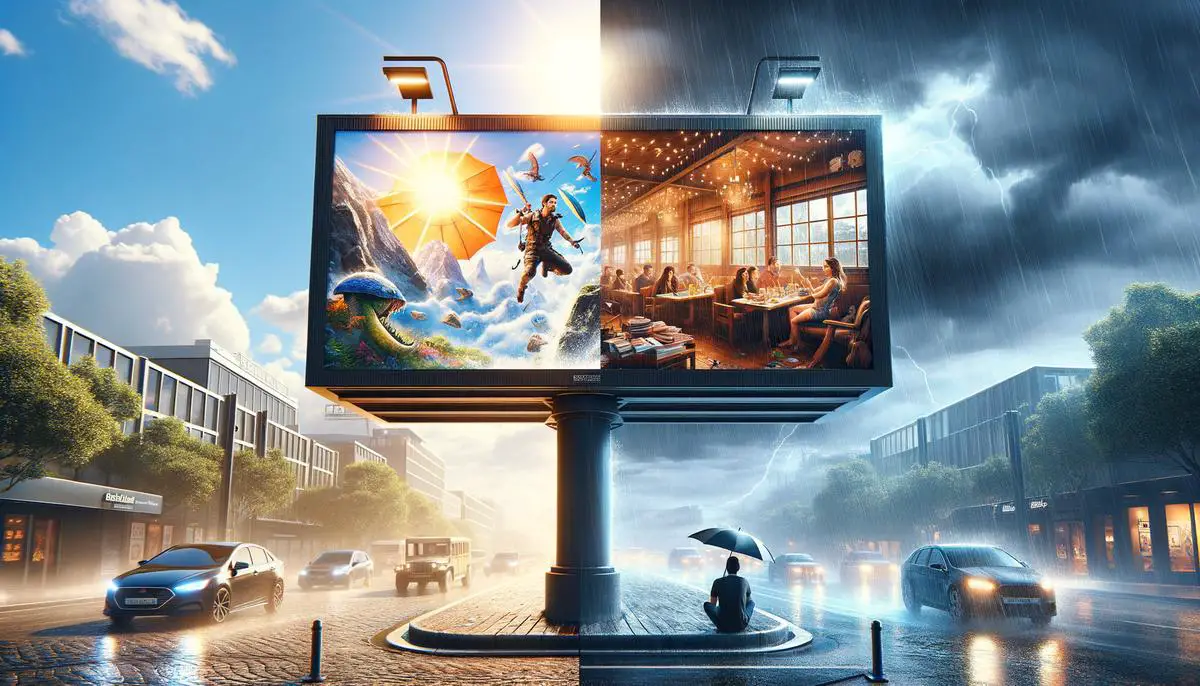
Measuring DOOH Effectiveness
Measuring the Effectiveness of DOOH Campaigns
Navigating the Metrics Maze
In the evolving landscape of Digital Out-of-Home (DOOH) advertising, measuring campaign effectiveness is crucial and complex. Traditional metrics of digital marketing, such as clicks and conversions, are not directly transferrable to DOOH due to its public nature and lack of direct interaction interfaces. Pinpointing the exact impact of DOOH exposures on audience behavior involves a blend of innovative technology and insightful analytics.
Complexity of Attribution in DOOH
Attribution in DOOH poses challenges not found in its indoor digital counterparts. The outdoor environment precludes straightforward user tracking and requires advertisers to infer impact indirectly. Despite these hurdles, technology and methodological advances have begun to offer solutions that bridge the attribution gap, enabling advertisers to gather actionable insights and R.O.I. data from their DOOH campaigns.
Evolving Metrics for a Dynamic Medium
Traditionally, impressions – the number of people likely to see an advertisement – have been the cornerstone of DOOH measurement. However, the metric is evolving with the addition of viewer engagement estimates, employing AI-powered cameras and sensors designed to analyze audience attention patterns. Such technologies can estimate not only the number of passersby but also engagement depth by detecting factors like gaze duration and even emotional responses to displayed content.
Beyond impressions, reach (the number of unique viewers) and frequency (average number of exposures per viewer) play into measuring DOOH's amplifying effect. Foot traffic analysis extends these dimensions by tracking increases in physical visits to stores or events consequent to DOOH ad exposures.
Leveraging Mobile Data for Deeper Insights
One breakthrough in DOOH's metrics puzzle comes from integrating mobile location data. By correlating anonymous mobile location signals with DOOH installation sites, advertisers can sketch a more granular picture of campaign impact. This includes mapping viewer journey post-exposure or evaluating uplift in web searches or app installs. The amalgamation of mobile tracking and DOOH placements opens avenues for cross-media campaign synergy analysis, revealing DOOH's effects on broader advertising ecosystems.1
The Quest for Direct Attribution
Despite advancements, the golden chalice of direct attribution – unequivocally linking a DOOH exposure to a specific customer action – remains somewhat elusive. However, innovative approaches continue to emerge. Quick Response (QR) codes and augmented reality features incorporated into DOOH ads encourage direct interactions, making stepped paths toward attribution. Meanwhile, Wi-Fi and Bluetooth beacon technologies are trialed for proximity-based messaging, promising another layer of measurable engagement with DOOH displays.
Facing the Challenges Head-On
Navigating the nuances of measuring DOOH effectiveness is no small feat. The inherent challenges of public advertising environments demand a blend of creativity and analytical prowess from advertisers. Yet, as technologies mature and methodologies refine, the capabilities to render DOOH impact visible are growing stronger.
In summary, whilst measuring the effectiveness of DOOH campaigns comes wrapped in layers of complexity due to its public and non-interactive nature, the convergence of advanced analytics, mobile integration, and emerging technologies is lighting the road ahead. Through combined efforts in industry innovation and methodical resilience, DOOH attribution is transitioning from abstract estimation to tangible insights, empowering advertisers to unlock the full potential of digital outdoor spaces.
The essence of digital out-of-home (DOOH) advertising lies in its ability to engage audiences in more personalized and interactive ways than ever before. Its transformative power in outdoor advertising, where precision targeting, instant adaptability, and creative storytelling come together, creates impactful and memorable campaigns. As technology continues to advance, DOOH stands as a testament to the evolving relationship between brands and their audiences in the digital age.
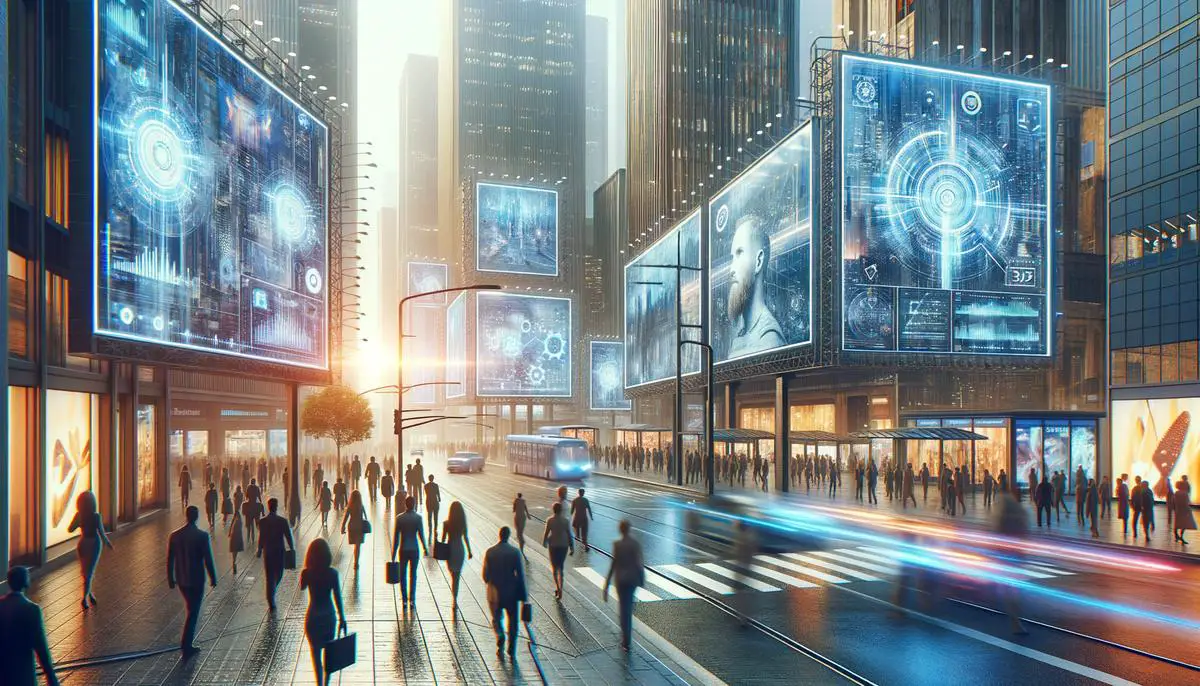
- Egu O, Bonnel P. Investigating the potential of using mobile network big data for enhancing travel demand analysis. Transport Res Proc. 2017;25:2926-2936.

